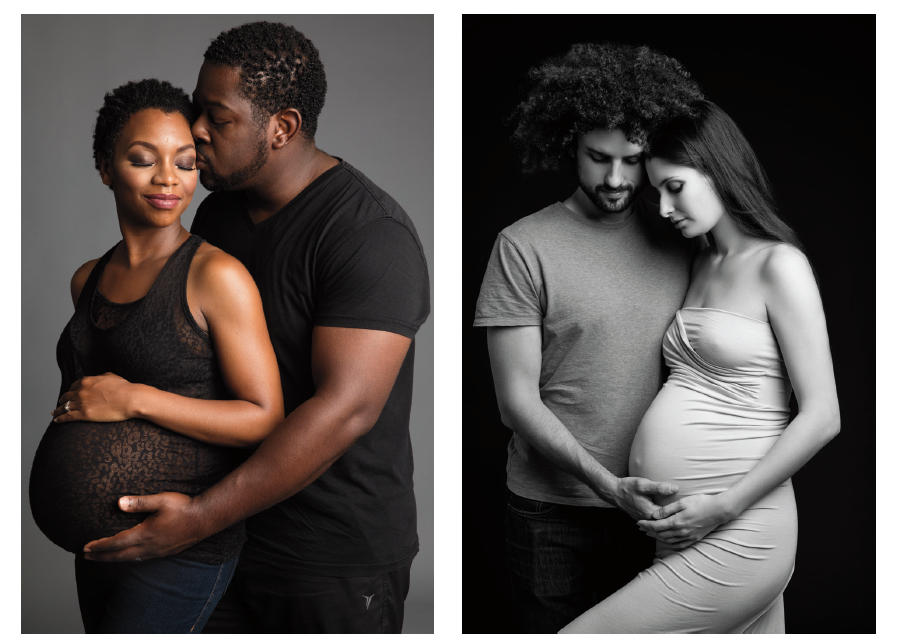Maternity Posing – Techniques to Flatter Everyone February 28, 2017 – Posted in: Photography – Tags: Flatter, Lindsay Adler, maternity, Photographer's Guide to Posing, Photography, portrait, Pose, Poses, posing, Techniques
MASTERING Your Craft: Maternity Posing
All Rules of Posing and Perspective Still Apply
Just because a pregnant subject may look wider, it does not mean that she wants to look heavier or without other feminine curves. You can still use all of the rules of posing, lens choice, and camera angle to bring out the best in your subject.
In your shoot, you may want your subject to lean her torso closer to the camera and push her hips back slightly to bring more emphasis to the face and chest. This is especially true of women in later stages of pregnancy, when their bump is already clearly defined. Try arching the lower back to create a beautiful curve. Stick the chin far out and down to reduce any double chin from the extra baby weight. Get at a high angle if you want to slenderize. Watch out for arms tight to the body that may create squished-arm syndrome (i.e., the arm looking wider or flabbier than it is). These are all things we’ve already discussed in-depth.
In FIGURE 11.20, the subject has an acceptable body position and pose. Yet in FIGURE 11.21, a subtle lean toward the camera brings more attention to her face and torso, while also slightly thinning her form.
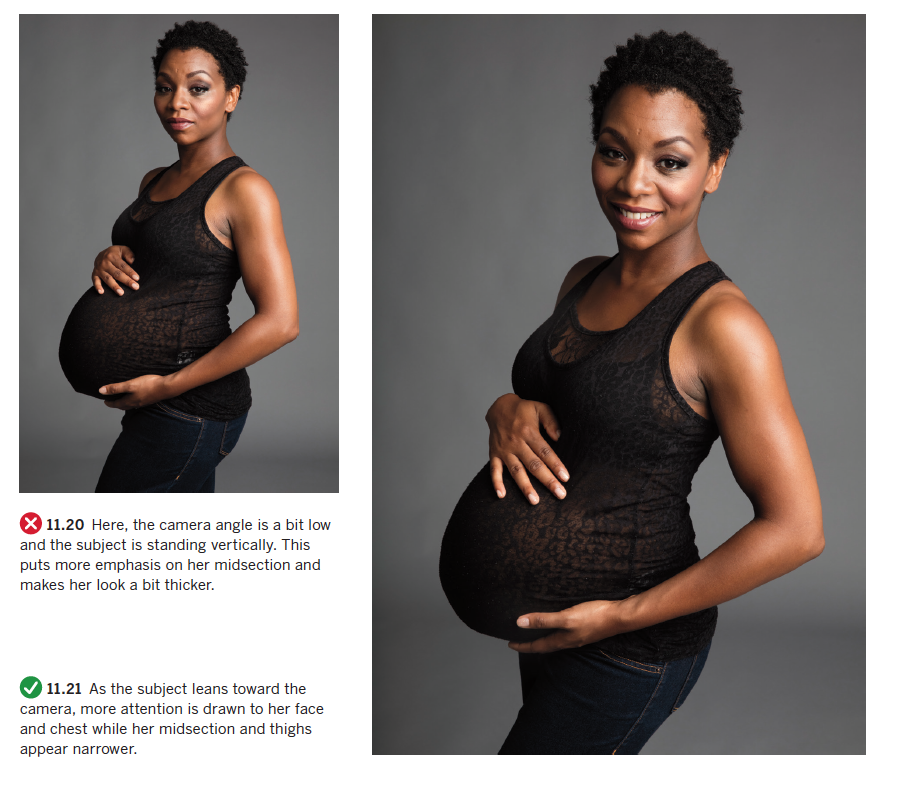
Let’s examine FIGURE 11.22. The subject has poor posture and a merger to the side of her body (the arm starts just as the body ends, adding several inches in apparent thickness to her form). If we remember our essential rules of posing, these issues can be remedied, as seen in FIGURE 11.23.
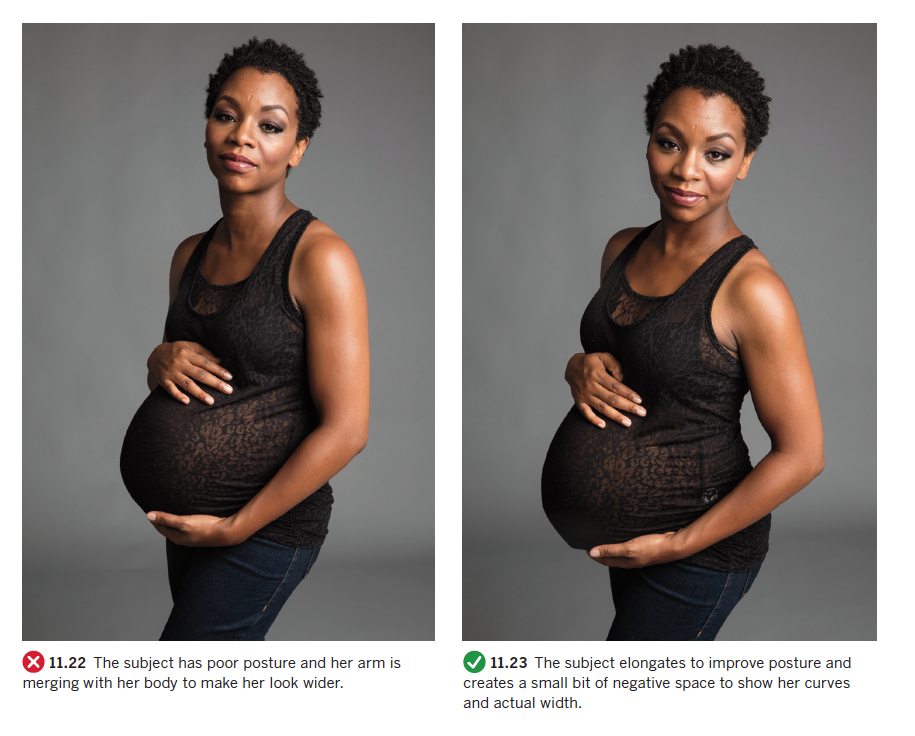
Fix the posture by having the subject pull up through the top of the head, elongating the pose. Fix the merger by creating a bit of negative space, showing her actual width.
Let’s take a look at another example. In FIGURE 11.24, the pose is not terrible, but we can definitely make some improvements. For example, typically you don’t want the arm squished in, nor do you want to completely hide the neckline. Whatever is closest to the camera appears largest, and therefore her arm dominates the frame. Furthermore, she is standing flat-footed.
How do we improve the overall shot? Switch the position of the hands and bend the knee closest to camera (FIGURE 11.25). The result is a much more elegant and pleasing pose. Is either change specific only to maternity posing? Not at all! That’s why it is so important to remember the foundations of posing regardless of subject matter.
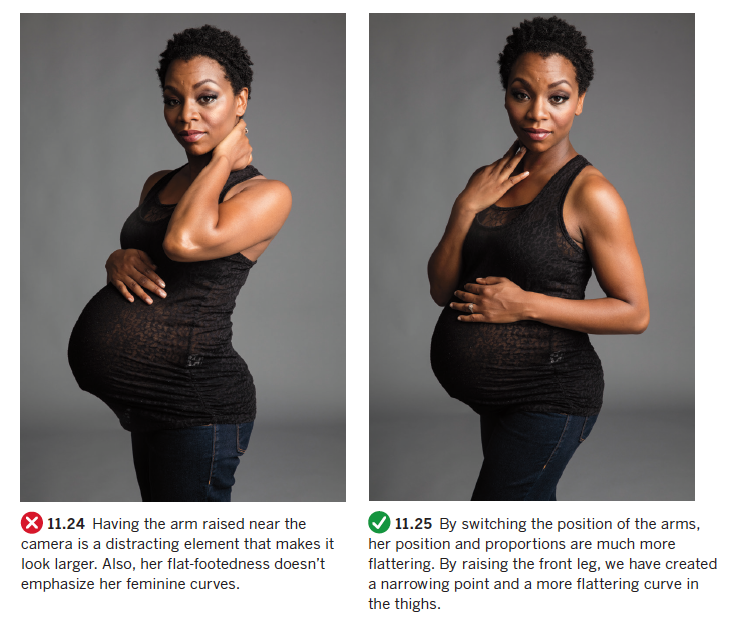
Include the Parental Partner in Supportive, Framing Poses
Including the partner in a maternity pose can create an even more meaningful image along with more pose variety in your maternity session. When you include the partner in images, you’ll want him or her in supportive poses—their arms wrapped around the mother’s stomach or holding her at a higher angle, the mother leaning back into them while seated, or with them taking a protective posture. While the mother will remain the focus of the image, the partner’s body language will show affection and support.
In FIGURE 11.27, the father wraps his hand around the mother’s stomach to both contour her form and suggest protective body language. He kisses the side of her head to show affection and the romantic relationship between the couple. In FIGURE 11.28, the position of the heads helps to create a heart-like composition, and the placement of the arms draws the eyes smoothly around the frame. His body language suggests an affectionate and protective nature.
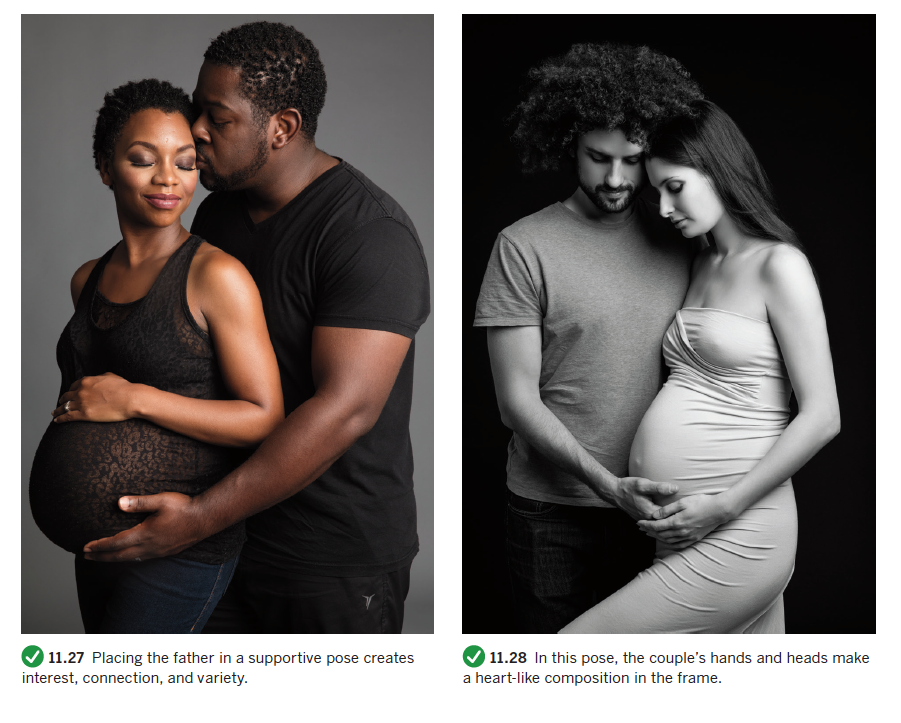
This was excerpted from The Photographer’s Guide to Posing, by Lindsay Adler – coming soon!

